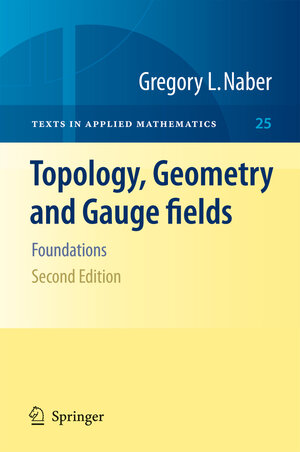
×
![Buchcover ISBN 9781461426820]()
First Edition Review:
„Naber’s book, together with its predecessor[N4] subtitled Foundations, occupies a less populated niche in the market. This is the sector of teachable texts on differential geometry and its use in physics. Teachability does not refer to a definition-theorem-proof format. Nor does it imply anything about the depth of the treatment. Rather, it has to do with the organization of the topics, the selection of examples, the amount of instructive details provided, the ability to anticipate questions from the reader, and knowing when to stop.“
--SIAM REVIEW
This is a book on topology and geometry and, like any books on subjects as vast as these, it has a point-of-view that guided the selection of topics. Naber takes the view that the rekindled interest that mathematics and physics have shown in each other of late should be fostered and that this is best accomplished by allowing them to cohabit. The book weaves together rudimentary notions from the classical gauge theory of physics with the topological and geometrical concepts that became the mathematical models of these notions. We ask the reader to come to us with some vague notion of what an electromagnetic field might be, a willingness to accept a few of the more elementary pronouncements of quantum mechanics, a solid background in real analysis and linear algebra and some of the vocabulary of modern algebra. To such a reader we offer an excursion that begins with the definition of a topological space and finds its way eventually to the moduli space of anti-self-dual SU(2) connections on S4 with instanton number -1. Iwould go over both volumes thoroughly and make some minor changes in terminology and notation and correct any errors I find.
In this new edition, a chapter on Singular Homology will be added as well as minor changes in notation and terminology throughout and some sections have been rewritten or omitted.
Reviews of First Edition:
“... this book should be very interesting for mathematicians and physicists (as well as other scientists) who are concerned with gauge theories." (Zentralblatt Fuer Mathematik)
“... this book should be very interesting for mathematicians and physicists (as well as other scientists) who are concerned with gauge theories." (Zentralblatt Fuer Mathematik)



